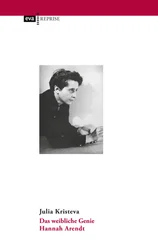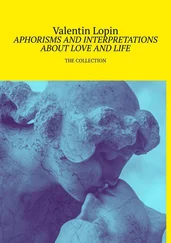Teresa’s “conversion,” the beginning of her deep surrender to religion, dates from 1555. Her contemplative life intensified. A devotee of the orisons of the alumbrados , Teresa nonetheless strove to understand and elucidate them. Two years later she heard her first heavenly “words.”
In 1559, the Inquisition placed on its Index of Prohibited Books many of the spiritual books and chivalrous novels in Castilian that Teresa’s mother had taught her to enjoy. Christ appeared and reassured her: “Don’t be sad, for I shall give you a living book.” 15A vision of Christ in 1559, a vision of Hell the following year. First raptures. Disillusioned by the worldliness of the “calced” Carmelite order, she planned to found, with her fellow nuns, a convent that would reinstate the order’s original rule, the “discalced” Carmel. She would replace shoes with canvas sandals.
At the request of her confessor, the Dominican Pedro Ibáñez, in 1560–1561 she undertook to write her life story. Already in 1554, following the advice of her confessors Gaspar Daza and Francisco de Salcedo, she had embarked on an autobiographical work, marking in her copy of Ascent of Mount Zion , by Bernardino de Laredo, the passages that mirrored her experience. 16The confessors, somewhat skeptical, suggested she make confession to the Jesuit Diego de Cetina. It was for him that Teresa set down “as clear an account of my life as I knew how to give, without leaving anything out.” 17But no trace remains of that early text; Teresa or her confessors must have destroyed it. In 1562 Teresa finished the first version of the Book of Her Life , delivered to the Dominican García de Toledo and subsequently lost, and founded the first reformed Carmelite convent, Saint Joseph of Avila, thanks to, amongst other donations, 200 ducats sent from Peru by her younger brother, Lorenzo. She took the name Teresa of Jesus . García de Toledo and the inquisitor Francisco de Soto Salazar asked her to resume and complete her account, which she did between 1563 and 1565: this is the version that has come down to us. It testifies to the way in which Teresa’s experience was influenced by the spiritual teachers of her time: Juan de Ávila, the “Andalusian apostle” acknowledged by Ignatius Loyola as his sole spiritual father; and in the lineage of the Franciscan Francisco de Osuna, Bernabé de Palma; but also Bernardino de Laredo and Alonso de Madrid ( The Art of Serving God ). These practiced the mysticism of recollection and were regarded as recogidos , or contemplatives, but they were not ignorant of scholasticism. Such readings calmed the anguish provoked by the silent prayer of Francisco de Osuna and guided the nun toward a vocal prayer that began with reading, before turning into ecstatic meditation. Teresa met numerous Church dignitaries of various orders (Jesuits, Dominicans, Franciscans, Carthusians) who supported or challenged her, criticized or guided her. Her mysticism gained authority under the notable influence of the Franciscan and future saint Pedro de Alcántara, whose kindliness toward women and special trust in her she commends in a 1576 letter to her brother Lorenzo. 18

Teresa of Jesus wrote The Book of Her Life at the age of fifty: a sum of familial and amorous memories that bares, without the least coyness, a body sick with desire and exultant in its affliction. If Teresa’s faith asserts itself as an expression of love, the coiling of this lover’s discourse upon itself would infuse her writing with devastating lucidity, continually redoubling the lover’s illusion without ever breaking away from it altogether. Doubtful, skeptical, frequently hostile, at last won over, her confessors instructed her to record the strange raptures she spoke of, those half mad, half rational states that so fascinated the letrados , learned churchmen of rank. Under their supervision the ecstatic seer became a writer: theologians pored over her notebooks, revising and correcting, while the ardent author, whose humility veiled a certain astuteness, soon got into her stride and, while never less than self-deprecating, poured out more and more onto the page. Self-analyses, constitutions, counsels, letters, poems: syncopated, in spurts and gusts, Teresa’s writing grew mentally and physically incessant. This scriptorial therapy deepened the confessional analysis of raptures and agonies — sensations that were appeased, if not effaced, beneath the torrent of texts and monastic foundations. Teresa founded herself in writing at the same time as she founded the Discalced Carmelite order.
A writer? She demurred, waved it away, forgot about it. Her confessors were the ones who got her started, after all; they supervised her output, they edited it, and now and then they censored it. Only one work was to be formally signed and authenticated by her, The Way of Perfection (1573).
A woman possessed by the devil? More than once Teresa doubted her visions, and took care to obtain endorsement from her spiritual guides. When she was suspected of Illuminism during the 1560s, the Dominican Pedro Ibáñez came to her defense with a highly favorable report. But matters were not always so simple. In February 1575, Teresa was the happiest of women: she had just met her “angel,” her “Elysium,” her “darling son,” Fr. Jerome Gratian of the Mother of God,* [*I have used the English version of Jerónimo Gracián’s name, as I have done with John of the Cross. Elsewhere I have kept the Spanish names. — Trans.] the apostolic visitor for Andalusia. He was thirty, she was sixty. They made up coded names for each other and loved under the Inquisition’s very nose: “I will never have better days than those I had there with my Paul.” As it happened, the Inquisition got onto La Madre’s case in 1575–1576. Thanks to the support of her confessor and spiritual director, the Dominican Domingo Báñez, doctor of theology and advisor to the Inquisition in Valladolid, they left Teresa alone but placed The Book of Her Life under lock and key: it could not be allowed to circulate among the populace. Recovering it in 1580, the next year she titled it, with wry humor, The Book of God’s Mercies . She no doubt held laughter to be next to love, and radiated both.
Although she was a great friend and accomplice of Saint John of the Cross (they met in 1567, when he was twenty-five and she was fifty-two) in both the Carmelite reformation and the life of the soul, Teresa eschewed the purgative asceticism of her “little Seneca”; she shared neither his endurance under flagellation nor his “privation of every kind of pleasure which belongs to the desire” ( Ascent of Mount Carmel ). 19The author of the Living Flame of Love would ultimately burn every single letter addressed to him by the sensual reformer.
After her death on October 4, 1582, in Alba de Tormes, Teresa was interred in the chapel of the dukes of Alba, under a heap of soil, stones, and lime. When her body was exhumed in 1586, its wondrously preserved state naturally encouraged the publication of the books. While she was alive, successive popes were at the very least wary of her: Paul IV, Pius V, and Gregory XIII (who recast the calendar) had no time for febrile mystics, especially female ones. La Madre was beatified a century after her birth, in 1614, in a festive Madrid of serpents, ships, and blazing castles. King Philip IV, the ambassadors, and the nobles paid homage to her in the cathedral adorned with her portrait: this depicted her holding a palm frond in one hand, the symbol of virginity, and a quill in the other, to represent literary genius. Lope de Vega himself presided over the poetic joust of sonnets composed in her honor. The Blessed Teresa was canonized by Gregory XV in 1622, in recognition of her “divine wisdom.” The Jesuits had supported her in life: Francisco Borgia, Baltasar Álvarez, Ripalda…The Council of Trent, inaugurating a new epoch for the Catholic faith, had need of someone like Teresa, whose experience fitted so well with the new outlook without being reducible to it. 20For La Madre had patently prefigured, indeed embodied, the baroque. She had led the way in balancing ascetic rigor, rehabilitated by the Carmelite reformation, with the wonders of supernatural spiritual contemplation, legitimized by her genius. It was in this spirit that Luis de León and Jerome Gratian posthumously published and commented upon her works, to consecrate Teresa of Avila as the saint of the Counter-Reformation.
Читать дальше













